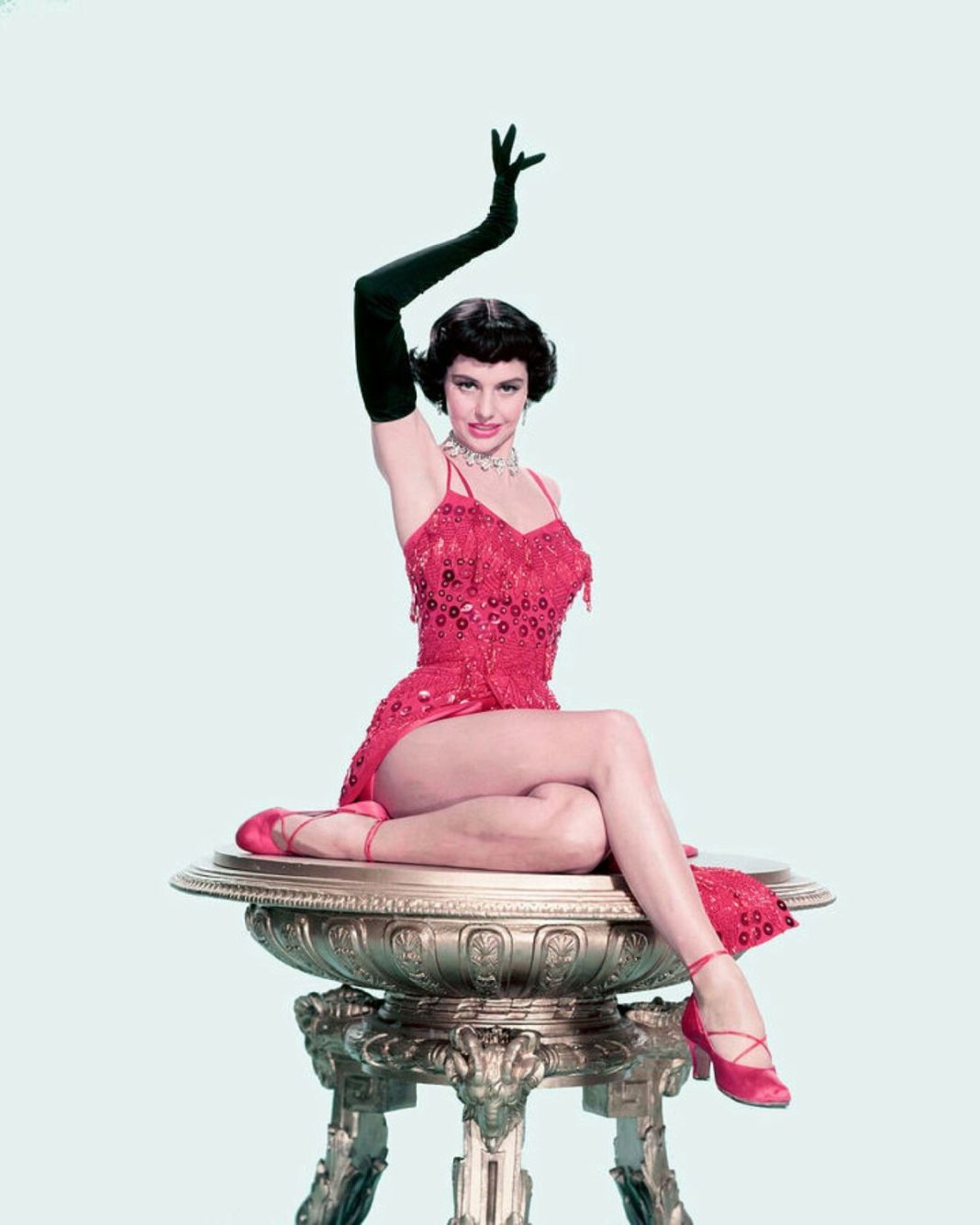The Lasting Legacy of Cyd Charisse: A Dance Icon
Cyd Charisse, who was known for her astonishingly long legs and captivating performances, remains an emblem of grace and talent in the world of dance and film. Born Tula Ellice Finklea in 1922 in Amarillo, Texas, her early life was marred by health challenges, including a bout with polio. Her parents, recognizing her frailty, enrolled her in ballet classes as a means to strengthen her body. Little did they know, this decision would set the stage for a remarkable career that would resonate through Hollywood for decades. Charisse’s journey from a sickly Texas girl to a celebrated star is a testament not only to her resilience but also to the transformative power of dance.
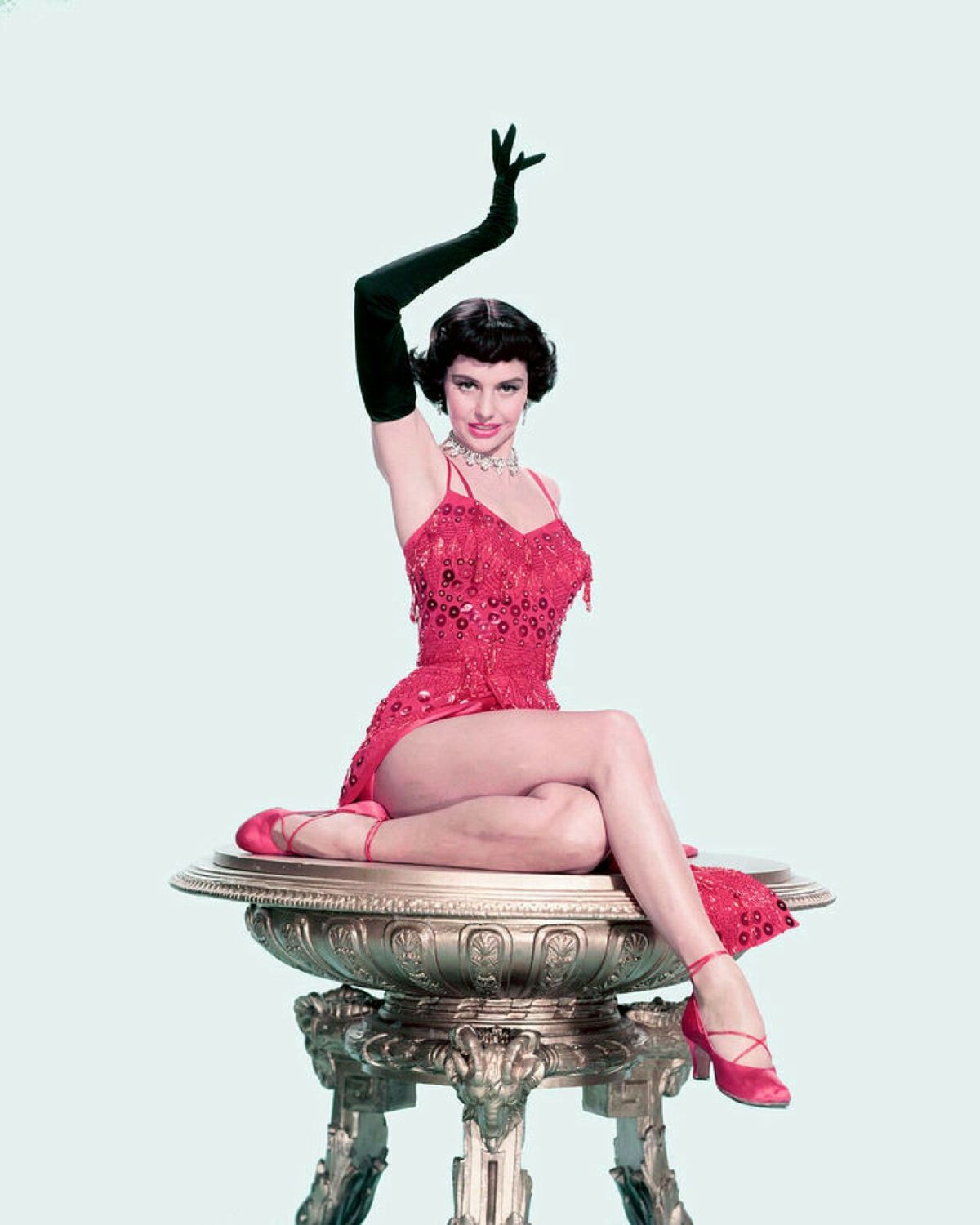
Charisse’s transition from a small-town girl to a Hollywood icon began in earnest when producer Arthur Freed encouraged her to adopt the stage name “Cyd,” a refined alteration of her brother’s mispronunciation of “Sis.” This transformation marked the inception of her illustrious career. By the time she reached her teenage years, she was already training with professional ballet instructors in Los Angeles, where she honed her technique and crafted her signature style. Her unique blend of classical ballet training with jazz and modern dance allowed her to develop a distinctive movement language that was both expressive and captivating. Charisse’s early performances, characterized by a calm yet powerful elegance, laid the groundwork for what would become her hallmark in the film industry.

Charisse’s ascent to stardom was punctuated by her debut in the 1945 musical Ziegfeld Follies, where her mesmerizing dance sequences opposite Gene Kelly left audiences in awe. Her appearance was marked by striking features, including jet-black hair and a signature style that combined sophistication with an effortless charm. Perhaps her most iconic moment came in the 1952 classic Singin’ in the Rain, where she performed the “Broadway Melody” ballet. In this performance, her legs seemed to stretch on indefinitely as she glided across the screen, showcasing an elegance that conveyed a multitude of emotions without uttering a single word. This performance solidified her status as a cinematic legend, a moment that resonates with audiences even today.
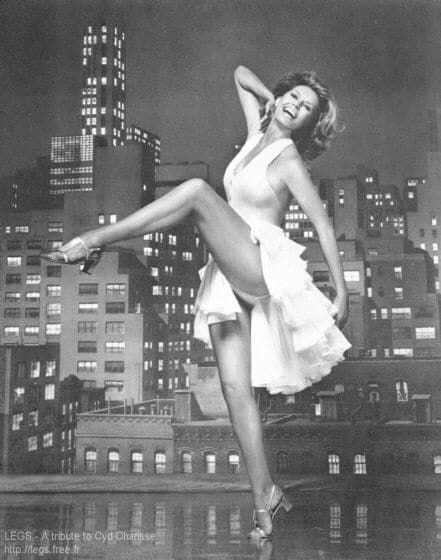
Throughout her career, Charisse often found herself at the center of a debate among dance enthusiasts: who was the superior partner, Gene Kelly or Fred Astaire? Interestingly, Charisse was one of the few dancers who seamlessly complemented both icons, showcasing a range of emotions through her movements. With Astaire, she transformed the act of dancing into a conversation, allowing her body to express what words could not. Their chemistry was palpable in films like The Band Wagon, where their duet in “Dancing in the Dark” exemplified a delicate balance of strength and grace. In contrast, her dynamic partnership with Kelly highlighted her ability to confront his powerful style with a grace that felt both delicate and fierce. Charisse’s performances often featured a mesmerizing interplay of tension and release, a testament to her deep understanding of the art of dance.
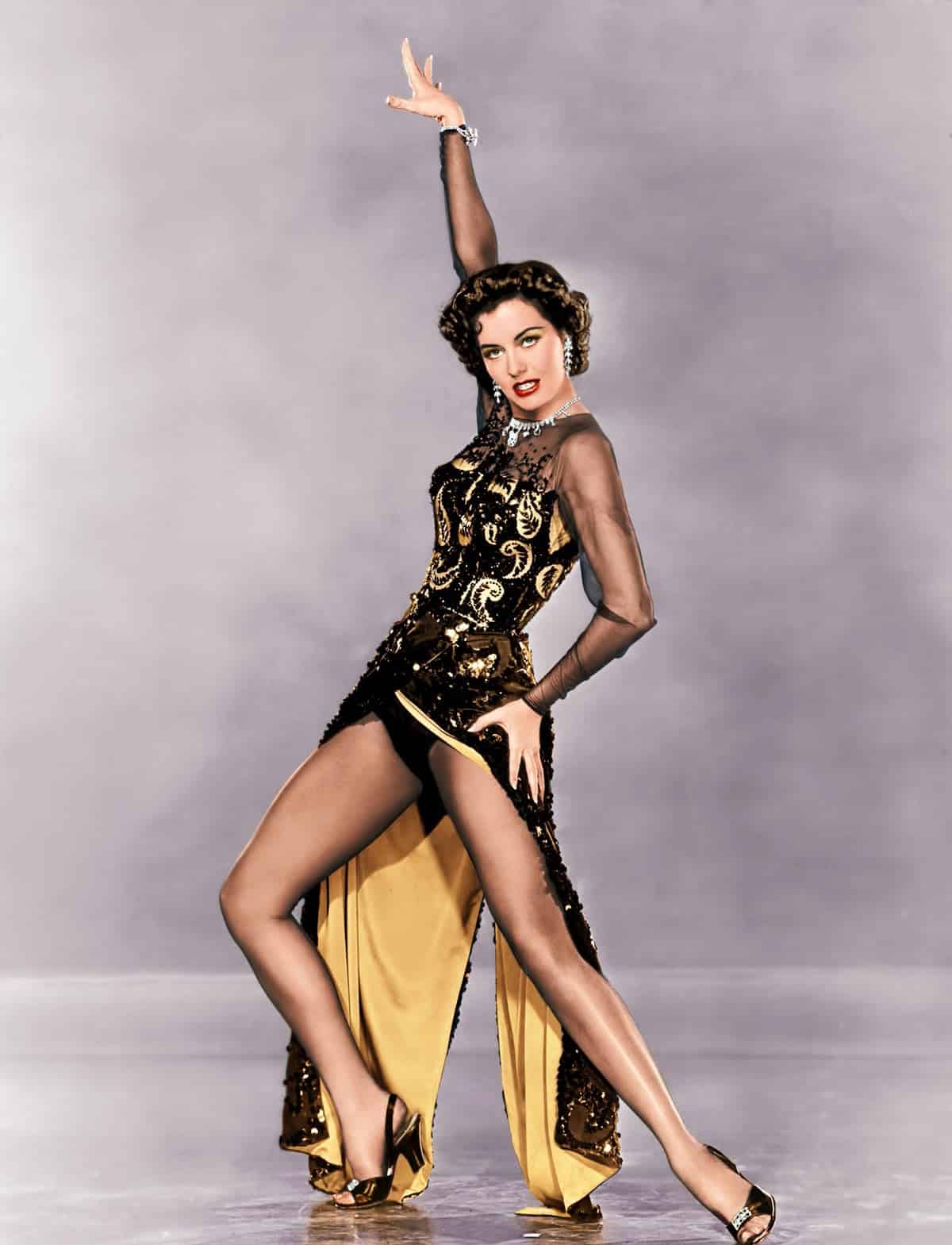
As the musical genre began to wane in the late 1950s, Charisse’s career endured through adaptability and reinvention. She seamlessly transitioned to European films and television, continuing to captivate audiences with her performances. Alongside her husband, singer Tony Martin, she formed a sophisticated nightclub act that showcased her enduring talent. In the 1990s, Charisse returned to the stage in a Broadway revival of Grand Hotel, dazzling audiences with the same authority and poise that had defined her career. Despite the glamour of her movie persona, colleagues remembered Charisse as a down-to-earth individual, more inclined to sip orange juice than indulge in the Hollywood party scene. This humility and authenticity resonated with many in the industry, reinforcing her status not just as a performer but as a beloved figure among her peers.
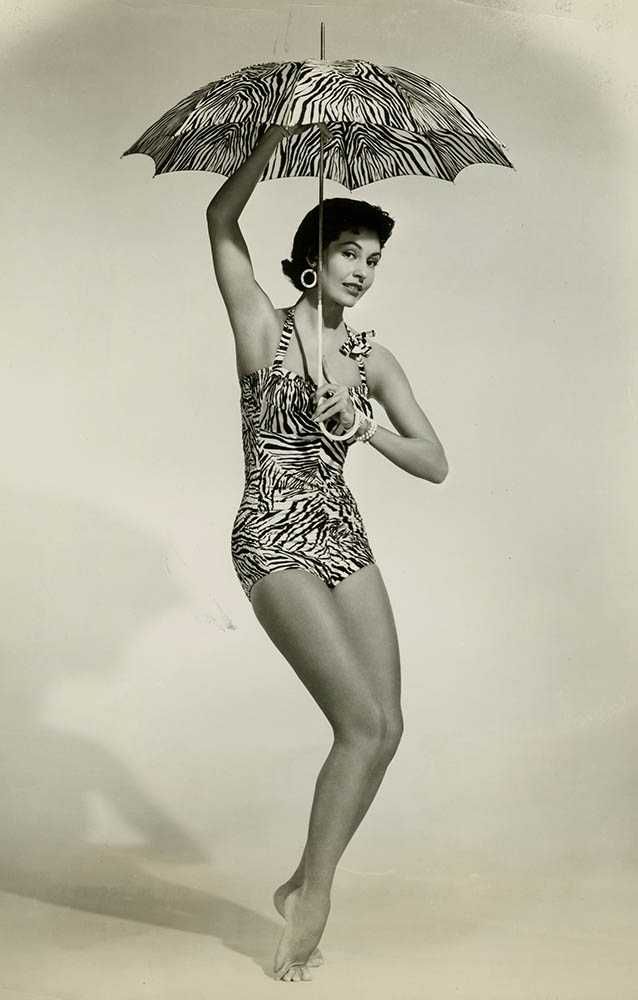
However, the life of this celebrated dancer was not free from personal tragedy. The loss of her daughter-in-law, Sheila Charisse, in the tragic American Airlines Flight 191 crash in 1979 left a profound impact on her family, serving as a harsh reminder of life’s fragility. This incident underscored Charisse’s resilience, as she continued to teach and inspire future generations of dancers, imparting wisdom that emphasized the importance of skill over superficiality. Her commitment to fostering young talent was evident in her later years, where she often held workshops aimed at nurturing aspiring dancers. In recognition of her contributions to the arts, Charisse was awarded the National Medal of Arts in 2006, solidifying her legacy as a pivotal figure in the evolution of cinematic dance.
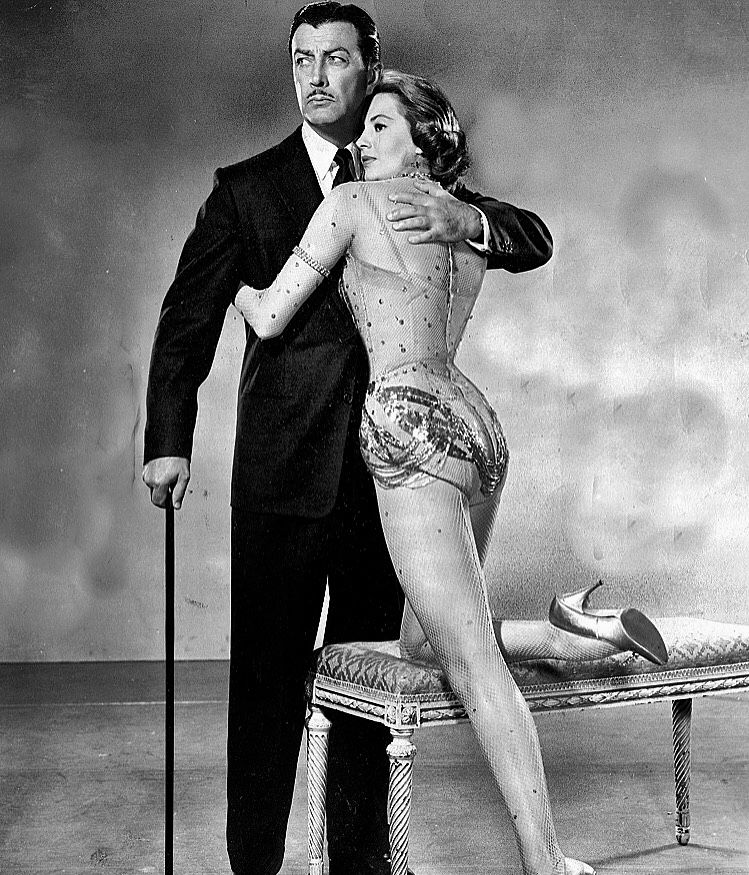
Cyd Charisse’s life and career were characterized by an interplay of strength and elegance, a duality that few dancers can master. Her performances transcended mere entertainment; they were narratives woven through movement, where every gesture told a story. The emerald green dress she wore in Singin’ in the Rain became an iconic symbol of her unique ability to transform dance into visual poetry. The grace with which she executed her choreography, combined with her commanding stage presence, allowed her to carve out a space in dance history that will not be easily filled. It is this legacy that continues to inspire artists and audiences alike, reminding us that movement can communicate profound emotions and ideas.
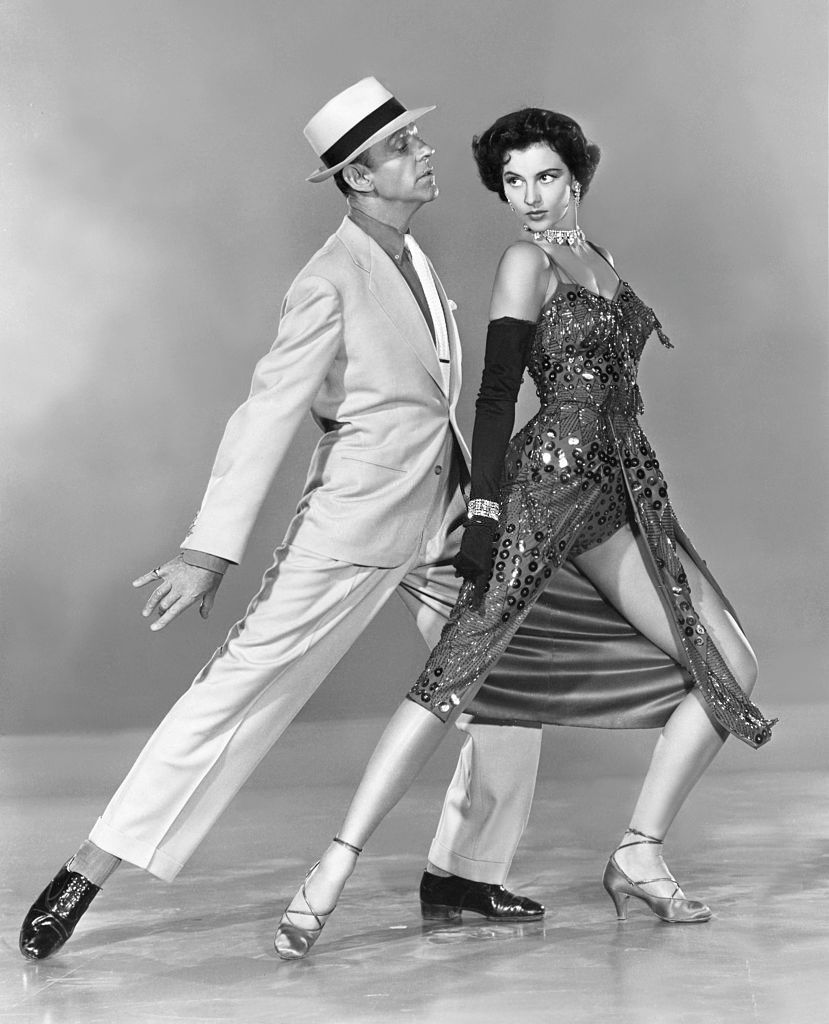
As we reflect on her contributions, it becomes clear that Cyd Charisse was much more than a dancer; she was a pioneer who reshaped the landscape of musical performance. Her ability to blend various dance styles into a cohesive artistic vision paved the way for future generations of performers, encouraging them to explore complexity and depth in their work. Charisse’s influence can be seen in the choreography of contemporary musicals, where the seamless integration of different dance techniques has become a hallmark of modern performance. Today, as we revisit her timeless performances and celebrate her artistry, we are left with the enduring reminder that Cyd Charisse’s legacy is one of unyielding passion, innovative spirit, and an unrivaled dedication to the art of dance.
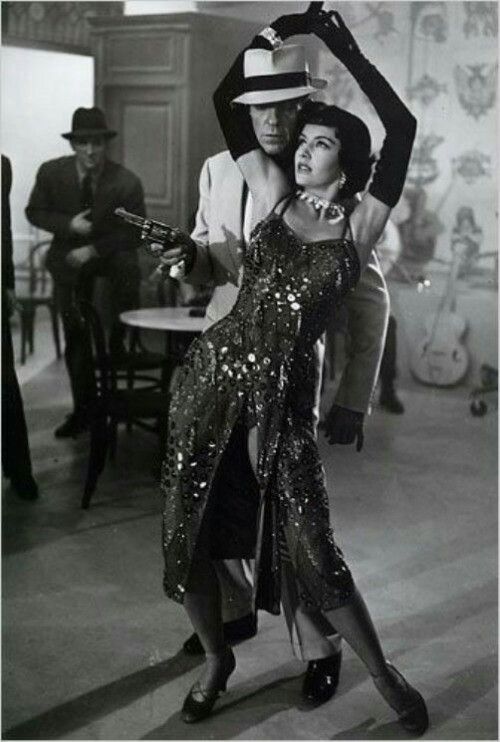
In essence, Cyd Charisse’s impact on the world of dance and film is immeasurable. She not only redefined the role of female dancers in Hollywood but also inspired countless others to pursue their dreams in the performing arts. Her story serves as a beacon of hope for those facing adversity, proving that with determination and talent, one can rise above challenges. Charisse’s artistry remains a vital part of the cultural fabric, reminding us that dance is not just an art form but a language in its own right, capable of expressing the unexpressable and connecting us across generations.



